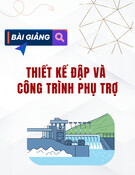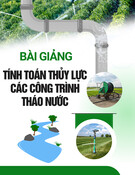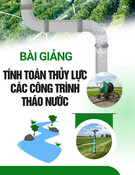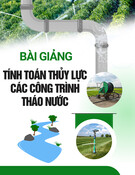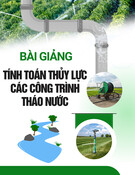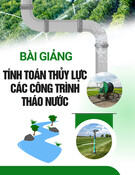JOURNAL OF SCIENCE AND TECHNOLOGY DONG NAI TECHNOLOGY UNIVERSITY
387
Special Issue
ANALYZING PERCEPTUAL COLOR DIFFERENCES OF 3D STRUCTURES IN CIVIL ENGINEERING: REAL VS VIRTUAL ENVIRONMENTS
1Dong Nai Technology University 2I-Shou Technology University *Corresponding author: Pham Ngoc Dang Khoa, phamngocdangkhoa@dntu.edu.vn
Phạm Ngọc Đăng Khoa1*, Jetter Lee2
GENERAL INFORMATION
ABSTRACT
Received date: 24/032024
Revised date: 28/05/2024
Accepted date: 19/07/2024
KEYWORD
Perceptual Color Differences;
further minimized
High-Dynamic Range (HDR) Displays;
Civil Engineering Visualization.
This study explores the perceptual color differences of 3D objects in real and virtual environments to improve color accuracy in civil engineering applications. Experiments were conducted using real-world objects under controlled D65 lighting and virtual objects displayed on LDR and HDR monitors. The grey scale method, involving fifteen color- normal observers for real-world tests and twelve for virtual tests, revealed that surface glossiness and lighting direction significantly affect color perception. Glossy surfaces exhibited smaller color differences, while combined diffuse and spot lighting these differences. Virtual experiments showed that HDR displays more accurately replicate real-world color differences, with a correlation of 𝑟 =0.461 compared to 𝑟 = 0.301 for LDR displays. However, discrepancies between real and virtual environments remain, suggesting that further advancements in rendering techniques are needed. These findings highlight the value of HDR technology in virtual simulations for achieving more precise color representation, ultimately enhancing design accuracy and decision-making in civil engineering.
1. INTRODUCTION
becomes more the
purposes but also for functional aspects, such as safety markings and material identification (Chi et al., 2020; Wang et al., 2021). As the integration of 3D models in civil engineering projects widespread, understanding the perceptual color differences between real-world and virtual representations of these models has become essential.
Various factors, In the realm of civil engineering, the use of 3D modeling has revolutionized the way structures are designed, visualized, and communicated. With increasing accessibility and affordability of 3D scanning and color printing technologies, there is a growing emphasis on accurately reproducing the colors of these models. This accuracy is crucial not only for aesthetic and design including glossiness, lighting direction, and the shapes of objects, can
JOURNAL OF SCIENCE AND TECHNOLOGY DONG NAI TECHNOLOGY UNIVERSITY
388
Special Issue
fidelity in virtual representations of civil engineering models (Gomes et al., 2018; Li et al., 2020).
significantly affect how colors are perceived (Luo & Rigg, 1987; Reinhard et al., 2010). These perceptual differences are crucial for developing models that accurately represent real-world structures. The CIEDE2000 color difference formula, which quantifies perceptual color differences more accurately, provides a foundation for this analysis (Luo, Cui, & Rigg, 2001).
that impact has shown significantly
the most accurate the perceptual these
communication effective This study aims to compare the perceptual color differences of 3D objects in both real and virtual environments within the context of civil engineering. By conducting three visual experiments—one with real-world objects and two with virtual objects displayed on LDR and HDR monitors—we aim to determine how closely virtual models can replicate the color perception of real-world objects. The objective is to identify the optimal conditions for achieving color representation in virtual environments. By color understanding differences, this research aims to improve the fidelity of virtual models used in civil engineering, ultimately contributing to better design accuracy, enhanced visualization, and more among engineers, architects, and stakeholders.
accurate to
revealing perception, display Research technologies color perception in virtual environments. Sun and Lai (2017) investigated the appearance differences of 3D objects when viewed through an RGB camera, highlighting challenges of maintaining color fidelity across different viewing conditions. Similarly, Lai and Sun (2017) focused on the conversion techniques from Low-Dynamic Range (LDR) to High- Dynamic Range (HDR) images, concluding that simpler conversion methods often yield better perceptual results than complex models. These studies emphasize the importance of choosing appropriate display and conversion techniques color ensure representation in virtual simulations (Mantiuk et al., 2011; Wang et al., 2019).
studies Numerous
safety features,
emphasizing the need
diverse across Researchers have extensively examined the precise reproduction of colors in 3D models within the realms of computer graphics and visual substantial implications for diverse fields such as civil engineering. have investigated the factors that affect perceptual color discrepancies between real-world and virtual environments. The development of the CIEDE2000 color difference formula serves as a foundational study in this field, striving to quantify perceptual color differences with greater precision (Luo, Cui, & Rigg, 2001), and it establishes a framework for assessing color variations applications, including digital imaging and printing.
In virtual environments, display that
In civil engineering, accurate color reproduction is critical for visualizing design elements, and material characteristics (Chen et al., 2020; Smith et al., 2018). Hung et al. (2018) conducted visual evaluations of color differences between 3D objects in real-world settings and virtual for simulations, optimized color difference formulas tailored to 3D structures. Their findings suggest that while HDR displays offer better color accuracy than there are still noticeable LDR displays, discrepancies between virtual and real-world color perceptions. This discrepancy highlights the ongoing challenge of achieving true color research demonstrates technologies profoundly influence color perception; Sun and Lai (2017) examined the variances in the
JOURNAL OF SCIENCE AND TECHNOLOGY DONG NAI TECHNOLOGY UNIVERSITY
389
Special Issue
the conditions
appearance of 3D objects observed through an RGB camera, illuminating the difficulties of preserving color fidelity under diverse viewing conditions, thereby underscoring the necessity for precise color reproduction in virtual simulations. the
Lai and Sun (2017) focused on
perceptual color differences of 3D objects in real and virtual environments, with a focus on for achieving optimizing accurate color reproduction in civil engineering models. By addressing these issues, we can fidelity of virtual models, improve enhancing their utility in design, visualization, and communication within the field of civil engineering.
2. METHODOLOGY
the conversion techniques from Low-Dynamic Range (LDR) to High-Dynamic Range (HDR) images, concluding that simpler conversion methods often yield better perceptual results than complex models. Their research suggests that HDR displays can better simulate real- world lighting conditions, thereby improving color fidelity in virtual environments.
the need emphasizing
to determine The methodology for both real-world and virtual experiments involved several key steps. For real-world objects, preparation began with printing the objects using a color-managed inkjet printer on thick paper to ensure accurate color reproduction. A lightbooth with D65 lighting was then set up to create controlled lighting conditions, including diffuse and spotlight configurations. Fifteen color-normal observers were selected based on standard vision tests to participate in the experiment. The grey scale method was employed to rate the color differences between pairs of 3D objects, and the data collected from the observers' the ratings were analyzed perceptual color differences.
Hung et al. (2018) conducted visual evaluations of color differences between 3D objects in real-world settings and virtual for simulations, optimized color difference formulas tailored to 3D structures. Their findings indicate that while HDR displays offer better color accuracy than LDR displays, discrepancies between virtual and real-world color perceptions persist. This highlights the ongoing challenge of achieving true color fidelity in virtual representations of civil engineering models.
Additionally, Luo and Rigg replicated
the
color-normal Twelve (1987) developed the BFD(l) color-difference formula, which considers factors such as glossiness, lighting direction, and object shape in color perception. These factors can significantly alter the appearance of colors and must be carefully managed to achieve realistic visualizations. Understanding how these variables impact color perception is crucial for creating models that faithfully replicate real-world appearances.
to compare
For virtual objects, the real-world objects in 3D using Autodesk were 3dsMAX. These virtual objects were displayed on a 42” HDR display, with images scaled to simulate LDR conditions (200 cd/m²). A simple knee function was applied for tone expansion from LDR to HDR, as illustrated in Figure 3(c). A Matlab interface was used to randomize the order of test images to prevent bias. observers participated in the virtual experiments. The grey scale method was again used to assess the visual color differences, and the collected ratings were analyzed the perceptual differences between LDR and HDR displays.
While significant progress has been made in understanding and quantifying perceptual color differences, there remains a gap in applying these findings specifically to civil engineering. This study aims to bridge this gap by comparing
JOURNAL OF SCIENCE AND TECHNOLOGY DONG NAI TECHNOLOGY UNIVERSITY
390
Special Issue
fidelity of virtual
Data from both the real-world and virtual experiments were analyzed using statistical methods to compare the perceptual color differences. The correlation between the results from real-world objects and virtual objects (both LDR and HDR) was calculated to assess the in simulations representing real-world color differences.
Real-world Objects
Figure 1. Viewing geometry for the grey scale method (diffuse and spot lighting)
Figure 2. Reference color-difference
Table 1. Properties of experimental factors
inkjet printer Factor Property
1. Cone, 2. Cube 1. Shape of the object
1. Matte, 2. Glossy 2. Glossiness of the surface The first experiment was designed to investigate the perceptual color differences of 3D objects in real-world settings. The setup involved using a lightbooth equipped with D65 lighting to ensure consistent and standardized lighting conditions. The objects used in this experiment were made from thick paper printed to using a color-managed maintain high color accuracy. Five reference colors were selected, each exhibiting a constant color difference in lightness, chroma, and hue (Luo & Rigg, 1987). These reference colors were crucial for accurately evaluating the perceptual differences.
3. Lighting direction 1. Diffuse lighting (topdown)
2. Diffuse lighting + spotlight
Virtual Objects
to ensure
The second and third experiments aimed to simulate the real-world conditions using virtual objects. Autodesk 3dsMAX 2014 was utilized to create accurate 3D models that replicated the real objects used in experiment of real-world objects. These models were displayed on a 42” HDR display with an sRGB color gamut, capable of high dynamic range imaging, to test the perceptual color differences in virtual environments. The properties of the experimental factors, such as the shape of the objects, surface glossiness, and lighting direction, are detailed in Table 1. The viewing environment setup is illustrated in Figure 1. The grey scale method, a well-established technique for evaluating visual color differences, was employed in this experiment. This method involves presenting pairs of 3D objects to observers and asking them to rate the color differences. A total of fifteen color-normal observers participated in this experiment reliable and statistically significant results. The reference color-difference pairs used in the experiment are shown in Figure 2.
JOURNAL OF SCIENCE AND TECHNOLOGY DONG NAI TECHNOLOGY UNIVERSITY
391
Special Issue
a To mimic 3. FINDINGS AND DISCUSSION
3.1 Real-world Objects
typical LDR display environment, the images were scaled in linear sRGB space to 200 cd/m², as the maximum luminance of the HDR LCD display is close to 800 cd/m². The conversion from LDR to HDR was based on findings from Sun and Lai (2017), which demonstrated that a simple knee function for tone expansion provided superior results compared to more complex models. This conversion process is illustrated in Figure 3
The results from the real-world object experiments provided valuable data on how influence perceptual color various factors differences. The fifteen color-normal observers evaluated the color differences between pairs of 3D objects under controlled D65 lighting conditions. The grey scale method was used to quantify these differences.
The virtual images were displayed using a Matlab-written graphic interface, which randomized the order of test images to prevent observer bias. The grey scale method was again employed to assess the visual color differences of the 3D object pairs. Twelve color-normal observers participated in these experiments to provide a robust comparison between LDR and HDR displays.
The data indicated that the shape of the lighting surface glossiness, and object, direction had significant effects on color perception. Specifically, objects with a glossy surface exhibited smaller perceptual color differences compared to those with a matte surface. Additionally, the lighting direction played a crucial role; diffuse lighting combined with spot lighting reduced the visibility of color differences more effectively than diffuse lighting alone. The results are summarized in Table 2.
Table 2. Summary of real-world object results
Factor Observed effect
(a)
Shape of the object Minimal impact on color perception
Glossiness of the surface Glossy surfaces showed smaller color differences
Lighting direction Combination of diffuse and spot lighting reduced color differences
(b)
The results from the real-world object experiments highlight the complexity of perceptual color differences influenced by various factors. The controlled environment consistent lighting provided with D65 Figure 3. Simulate real-world objects: (a) 3D model created by 3dsMAX. (b) Knee function for LDR to HDR image conversion
JOURNAL OF SCIENCE AND TECHNOLOGY DONG NAI TECHNOLOGY UNIVERSITY
392
Special Issue
Table 3. Summary of virtual object results
direction significantly Display Type Correlation with Real- world Data
r = 0.301 LDR Display
r = 0.461 HDR Display conditions, allowing for reliable data collection. The findings show that surface glossiness and impact lighting perceived color differences. Glossy surfaces exhibited smaller perceptual differences compared to matte surfaces, likely due to the specular reflection that reduces the apparent variation in color.
Moreover,
When comparing the real-world and virtual object experiments, it was evident that virtual environments, particularly those using HDR displays, can closely replicate real-world color differences. However, some discrepancies still exist. These differences are likely due to the limitations of virtual rendering techniques and the inherent challenges in perfectly simulating real-world lighting and material properties.
the combination of diffuse lighting and spot lighting effectively minimized perceived color differences. This suggests that lighting direction and intensity are crucial in color evaluation, as they can enhance or obscure color variations. These insights are valuable for applications in civil engineering where accurate color reproduction is essential, such as in material selection and safety markings.
3.2 Virtual Objects
under simulated
The optimal weighting factors for the CIEDE2000 color difference formula were higher for real-world objects than for virtual objects, suggesting that lightness differences are less noticeable in 3D objects viewed in real- world conditions. This finding supports the hypothesis that human vision discounts lightness differences due to highlight and shadow effects in 3D objects.
in in simulating The virtual object experiments were conducted to compare the perceptual color real-world differences conditions. The 3D models created in Autodesk 3dsMAX were displayed on a 42” HDR monitor, with images scaled to 200 cd/m² to simulate LDR conditions. The grey scale method was used again, and twelve color- these normal observers participated experiments.
from The data
simulating
The virtual object experiments provided a comparative analysis of LDR and HDR displays real-world color perception. The high correlation between HDR and LDR results indicates that both display types can produce consistent color differences. However, the closer correlation of HDR displays to real-world data compared to LDR displays underscores the superiority of HDR technology in mimicking real-world lighting conditions and material properties.
HDR displays' ability to better represent real-world color differences can be attributed to their higher dynamic range and color accuracy, which allow for more nuanced and realistic visualizations. This finding supports the use of the virtual object experiments showed a high correlation between the results from HDR and LDR displays (r = 0.703), indicating that HDR displays are more real-world color in effective perception compared to LDR displays. However, the correlation between real-world and HDR virtual objects (r = 0.461) was higher than that between real-world and LDR virtual objects (r = 0.301), suggesting that HDR displays provide a more accurate representation of real-world color differences. The findings are detailed in Table 3.
JOURNAL OF SCIENCE AND TECHNOLOGY DONG NAI TECHNOLOGY UNIVERSITY
393
Special Issue
HDR displays in virtual simulations for civil engineering applications, where precise color representation is critical for design accuracy and effective communication. revealed discrepancies between real-world and virtual environments, suggesting that virtual still have simulations, while advanced, limitations in perfectly replicating real-world conditions. 3.3 Comparison and Implications
in future research. First,
the
The comparison between real-world and virtual object experiments reveals that while virtual environments, especially those using HDR displays, can closely replicate real-world color differences, there are still noticeable discrepancies. These differences may stem limitations of virtual rendering from techniques and the inherent challenges in simulating complex lighting and material interactions in real-world settings.
provide
technologies, display
Several limitations of this study should be addressed the experiments were conducted in controlled laboratory settings, which may not fully represent the variability found in real-world environments. Future studies should explore more diverse lighting conditions, including natural light, and consider a broader range of ambient settings. Additionally, the relatively small sample size and the focus on color- normal observers limit the generalizability of the findings. Expanding the participant pool to include those with varying levels of color vision comprehensive a more could understanding. Further research could also investigate the effects of different rendering and algorithms, calibration methods to standardize virtual simulations across platforms and enhance their accuracy and reliability. The optimal weighting factors for the CIEDE2000 color difference formula being higher for real-world objects suggest that human vision is more sensitive to color differences in physical objects than in virtual representations. This over-discounting of lightness differences in virtual environments might be due to the way human vision processes highlights and shadows in 3D objects, making lightness differences less noticeable. 4. CONCLUSION
to investigate This study aimed
and surfaces
conditions lighting reproduction color for
surfaces and
the perceptual color differences of 3D objects in both real and virtual environments, with a focus on understanding the factors that influence these differences and the effectiveness of different display technologies. The experiments real-world objects under conducted with controlled provided valuable insights into how surface glossiness and lighting direction significantly impact color perception. Glossy the combination of diffuse and spot lighting were found to reduce perceptual color differences, highlighting the importance of these factors in accurate color reproduction.
The findings from the real-world and virtual object experiments highlight the significant influence of surface glossiness, object shape, and lighting direction on perceived color differences. Glossy the combination of diffuse and spot lighting were found to reduce perceptual color differences, underscoring the importance of these factors in civil accurate engineering applications, such as material selection and safety markings. In virtual environments, HDR displays demonstrated a real-world color closer correlation with perception compared to LDR displays, validating the effectiveness of HDR technology in simulating complex lighting conditions and material properties. However, the results also
JOURNAL OF SCIENCE AND TECHNOLOGY DONG NAI TECHNOLOGY UNIVERSITY
394
Special Issue
real-world reproduction in civil engineering, ultimately leading to more effective design and decision- making processes.
REFERENCES
real Luo, M. R., Cui, G., & Rigg, B. (2001). The development of the CIE 2000 colour- difference formula: CIEDE2000. Color Research & Application, 26(5), 340-350.
improvements In virtual environments, the use of HDR displays demonstrated a higher fidelity in differences color simulating compared to LDR displays. The closer correlation of HDR display results with real- world data suggests that HDR technology is more effective in replicating complex lighting and material properties. However, some and virtual discrepancies between environments remain, underscoring the need for in virtual continued rendering techniques.
Sun, P. L., & Lai, Y. Z. (2017). Estimating appearance differences of 3D objects with an RGB camera. Electronic Imaging 2017, San Francisco, USA.
Lai, Y. Z., & Sun, P. L. (2017). Preferred LDR to HDR image conversion for HDR displays. 24th International Display Workshop (IDW'17), Sendai, Japan.
Hung, W. C., Sun, P. L., Lai, Y. Z., & Chen, Y. M. (2018). A visual evaluation of color differences between 3D objects. CIE 2018 Smart Lighting Conference, CIE. The findings from this study have important implications for the use of 3D models in civil engineering. Accurate color reproduction in simulations can enhance design virtual accuracy, improve material selection processes, and ensure effective communication of design intent and safety features. Future research should focus on further refining virtual rendering methods and exploring additional factors that influence color perception to develop more comprehensive guidelines for accurate color representation.
This integrates research uniquely
Luo, M. R., & Rigg, B. (1987). BFD(l) colour- difference formula part I - Development of the formula. Journal of the Society of Dyers and Colourists, 103, 86-94.
Chen, J., Wang, X., & Zhang, Z. (2020). Advanced 3D scanning and printing technologies in civil engineering. Journal of Construction Engineering and Management, 146(4), 04020022.
applications reality
engineering, Automation
Chi, H. L., Kang, S. C., & Wang, X. (2020). Research trends and opportunities of in augmented and architecture, construction. in Construction, 107, 102930. the evaluation of color perception differences with practical civil engineering applications, such as improving the accuracy of 3D modeling, material selection, and safety visualization. By demonstrating how HDR displays can better simulate real-world lighting conditions and material properties, the study introduces new possibilities for leveraging advanced display technologies in architectural and engineering simulations. The proposed framework for assessing perceptual color differences can be adopted by practitioners to optimize virtual environments for more realistic and reliable representations. This innovative approach not only enhances the visual fidelity of digital models but also provides a foundation for developing standardized guidelines for color
JOURNAL OF SCIENCE AND TECHNOLOGY DONG NAI TECHNOLOGY UNIVERSITY
395
Special Issue
in all
quality predictions luminance conditions. ACM Transactions on Graphics (TOG), 30(4), 1-14.
Gomes, L., Pereira, J., & Barbosa, J. (2018). Enhancing virtual reality with HDR imaging for architectural visualizations. Computer Graphics Forum, 37(2), 456- 469.
lighting.
Reinhard, E., Ward, G., Pattanaik, S., & Debevec, P. (2010). High dynamic range and imaging: Acquisition, display, image-based Morgan Kaufmann.
Hung, W. C., Sun, P. L., Lai, Y. Z., & Chen, Y. M. (2018). A visual evaluation of color differences between 3D objects. CIE 2018 Smart Lighting Conference, CIE.
of
Lai, Y. Z., & Sun, P. L. (2017). Preferred LDR to HDR image conversion for HDR displays. 24th International Display Workshop (IDW'17), Sendai, Japan. Engineering,
Smith, S. T., El-Gohary, N., & Hamada, H. display impact (2018). The technologies on color accuracy in 3D architectural visualizations. Journal of 24(3), Architectural 04018018.
Li, X., Xu, Y., & Song, X. (2020). Assessing the accuracy of 3D printed models in civil engineering applications. Automation in Construction, 113, 103140.
Sun, P. L., & Lai, Y. Z. (2017). Estimating appearance differences of 3D objects with an RGB camera. Electronic Imaging 2017, San Francisco, USA.
Luo, M. R., Cui, G., & Rigg, B. (2001). The development of the CIE 2000 colour- difference formula: CIEDE2000. Color Research & Application, 26(5), 340-350.
Wang, X., Chen, Y., & Smith, S. (2019). Optimizing HDR imaging techniques for accurate color representation in civil engineering models. Journal of Civil Engineering and Management, 25(5), 481-490.
Luo, M. R., & Rigg, B. (1987). BFD(l) colour- difference formula part I - Development of the formula. Journal of the Society of Dyers and Colourists, 103, 86-94.
Wang, Y., Li, H., & Guo, J. (2021). Applications of 3D printing in civil engineering: A review. Automation in Construction, 119, 103338. Mantiuk, R., Kim, K. J., Rempel, A. G., & Heidrich, W. (2011). HDR-VDP-2: A calibrated visual metric for visibility and


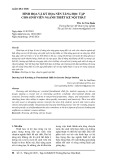

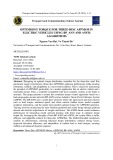
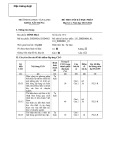
![Kỹ năng diễn họa ý tưởng: Quy trình thiết kế nội thất [Chuẩn nhất]](https://cdn.tailieu.vn/images/document/thumbnail/2025/20250123/tuetuebinhan000/135x160/2951737633170.jpg)






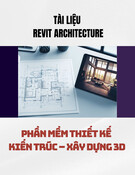

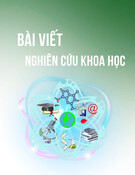
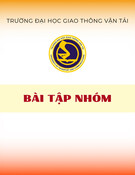
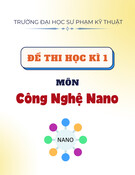
![Bài giảng Quản lý vận hành và bảo trì công trình xây dựng [chuẩn nhất]](https://cdn.tailieu.vn/images/document/thumbnail/2025/20251006/agonars97/135x160/30881759736164.jpg)
